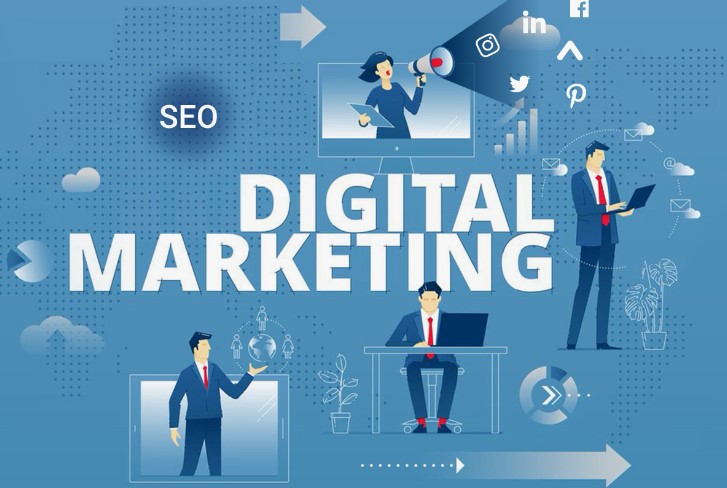The Power of Social Media Influencer Marketing: Strategies, Benefits, and Future Trends
Introduction to Social Media Influencer Marketing
In today’s digital era, marketing has transcended traditional methods and entered a new dimension—social media influencer marketing. This modern approach has revolutionized how brands connect with consumers, making it one of the most powerful tools in digital marketing. At its core, social media influencer marketing involves collaborating with individuals who have significant influence on social media platforms to promote products, services, or campaigns. These influencers can range from celebrities and macro-influencers with millions of followers to micro and nano-influencers with a niche yet highly engaged audience.
What is Social Media Influencer Marketing?
Social media influencer marketing is a strategic collaboration between brands and content creators who have built credibility, trust, and a loyal following on platforms such as Instagram, YouTube, TikTok, Twitter, LinkedIn, and Facebook. Influencers act as brand ambassadors and use their social presence to shape audience opinions and encourage them to take desired actions—be it purchasing a product, visiting a website, downloading an app, or simply building brand awareness.
Unlike traditional advertising, which often comes off as salesy, influencer marketing leverages authenticity and relatability. Consumers tend to trust influencers more than they trust branded ads. This is why brands are increasingly allocating significant budgets to influencer campaigns to gain an edge in the competitive marketplace.
Types of Social Media Influencers
The landscape of influencer marketing is vast and diverse. Influencers are generally categorized based on their follower count:
- Nano-Influencers (1K–10K followers) – Known for their strong relationships with their audience, nano-influencers often achieve higher engagement rates than larger influencers. Brands seeking authentic promotion and word-of-mouth recommendations often work with nano-influencers.
- Micro-Influencers (10K–100K followers) – Micro-influencers strike a balance between reach and engagement. They are typically viewed as subject matter experts in niche areas like fitness, fashion, beauty, tech, or travel.
- Macro-Influencers (100K–1M followers) – With a large and diverse follower base, macro-influencers are ideal for brands aiming for mass awareness and exposure.
- Mega or Celebrity Influencers (1M+ followers) – These influencers command huge audiences and are often used for high-impact campaigns. Their reach is immense, but the engagement rate may vary.
Why Social Media Influencer Marketing Works
- Authenticity and Trust – Audiences follow influencers because they value their opinions and trust their recommendations. This authenticity translates into higher conversion rates than traditional advertising.
- Targeted Reach – Influencers often specialize in specific niches, allowing brands to reach a highly targeted and relevant audience.
- Engagement – Influencers foster two-way conversations with their followers. Comments, likes, shares, and direct messages create an engaging and interactive experience.
- Content Creation – Influencers are skilled content creators. They understand their audience’s preferences and know how to craft compelling content that resonates.
- Cost-Effectiveness – Especially when working with nano and micro-influencers, brands can achieve substantial ROI without breaking the bank.
Platforms Driving Influencer Marketing Success
Each social media platform offers unique opportunities for influencer marketing:
- Instagram – The go-to platform for lifestyle, fashion, beauty, and food influencers. Stories, reels, and carousel posts allow creative flexibility.
- YouTube – Ideal for long-form content like tutorials, reviews, and vlogs. YouTube influencers are particularly effective in tech, beauty, gaming, and education.
- TikTok – The new-age platform for short, entertaining videos. It’s perfect for viral challenges, product unboxings, and brand trends.
- Twitter – Best for influencers in industries like business, politics, and entertainment. Real-time engagement and thought leadership content thrive here.
- LinkedIn – Used for B2B influencer marketing, especially in professional services, tech, and education.
- Facebook – Still relevant, especially for targeting older demographics. Useful for video content, groups, and community building.
Crafting an Effective Influencer Marketing Strategy
- Set Clear Goals – Whether it’s brand awareness, lead generation, sales, or website traffic, setting specific and measurable goals helps track campaign success.
- Identify the Right Influencers – Choose influencers whose values align with your brand. Evaluate their engagement rates, audience demographics, and past partnerships.
- Define the Campaign Message – Ensure consistency in messaging while giving influencers creative freedom to present it in their unique style.
- Choose the Right Platform – Focus on where your target audience is most active and where the influencer has the strongest presence.
- Budgeting and Compensation – Decide whether you’ll offer payment, free products, affiliate commissions, or a mix. Compensation should match the influencer’s reach and effort.
- Track and Measure Results – Use KPIs such as engagement rates, impressions, clicks, conversions, and ROI to measure performance and optimize future campaigns.
Benefits of Social Media Influencer Marketing for Brands
- Boosts Brand Awareness – With influencers sharing branded content, your message gets amplified to thousands or even millions of followers.
- Improves Brand Credibility – Trusted recommendations from influencers act like modern-day word-of-mouth endorsements.
- Increases Customer Engagement – Influencer content generates more likes, comments, and shares than traditional ads.
- Drives Conversions – Followers are more likely to purchase a product recommended by someone they admire and trust.
- Enhances SEO and Online Visibility – Influencers linking back to your site or mentioning your brand can boost your SEO rankings.
- Builds Long-Term Partnerships – Brands can form lasting collaborations with influencers, turning them into long-term advocates.
Challenges in Influencer Marketing
- Fake Followers and Engagement – Some influencers inflate their numbers using bots. Always verify authenticity through engagement metrics and analytics tools.
- Brand-Influencer Mismatch – Collaborating with the wrong influencer can backfire. Ensure alignment in values and audience.
- Content Control – Giving influencers creative freedom is important, but lack of oversight can lead to inconsistent messaging.
- Measuring ROI – Tracking the direct impact of influencer campaigns can be complex, especially when dealing with intangible goals like awareness or sentiment.
- Compliance and Disclosure – Influencers must clearly disclose paid partnerships to maintain transparency and adhere to advertising regulations.
Successful Case Studies of Influencer Marketing
- Daniel Wellington – This watch brand built its empire by leveraging thousands of micro-influencers worldwide, gifting them watches and offering unique discount codes.
- Glossier – A beauty brand that built its marketing around real customers and nano-influencers. Their tagline “Skin First. Makeup Second.” resonated through authentic user-generated content.
- Gymshark – Partnered with fitness influencers on YouTube and Instagram, transforming from a small startup to a global fitness apparel leader.
- HelloFresh – Used food and lifestyle influencers across YouTube and Instagram to demonstrate meal prep ease and drive subscriptions with affiliate links and promo codes.
Future Trends in Social Media Influencer Marketing
- Rise of AI-Generated Influencers – Virtual influencers like Lil Miquela are gaining popularity. These computer-generated personas have their own followings and brand deals.
- Long-Term Partnerships – Brands are shifting from one-off collaborations to ongoing relationships to build more authentic and lasting brand advocacy.
- Performance-Based Models – Influencer payments are increasingly tied to actual results (e.g., sales, signups), not just impressions or posts.
- Live Commerce – Influencers hosting live-stream shopping events are becoming a trend, especially in beauty and fashion niches.
- Focus on Diversity and Inclusion – Brands are increasingly collaborating with diverse influencers to reflect and connect with wider audiences authentically.
- Micro and Nano-Influencers on the Rise – Their high engagement and niche influence are making them the preferred choice for many brands seeking cost-effective campaigns.
How to Get Started with Influencer Marketing
If you’re a brand looking to launch your first influencer marketing campaign, here’s a simple roadmap:
- Define your marketing objectives and target audience
- Choose the right social media platforms for your campaign
- Research and shortlist relevant influencers using tools like Upfluence, AspireIQ, or manual outreach
- Connect with influencers through email, direct messages, or influencer agencies
- Negotiate deliverables, compensation, and timelines
- Monitor performance through tracking links, promo codes, and analytics
- Analyze results, gather feedback, and refine your approach for future campaigns
Conclusion: Embracing the Future of Marketing
Social media influencer marketing is no longer a trend; it’s a proven strategy that delivers real results. As audiences continue to reject traditional ads in favor of authentic, peer-to-peer recommendations, influencer marketing will only grow stronger. Whether you’re a startup or an established brand, investing in the right influencer partnerships can elevate your marketing efforts and help you build lasting relationships with your target audience.
As with any marketing strategy, success comes from thoughtful planning, choosing the right partners, and continuously analyzing what works best. By embracing social media influencer marketing today, brands position themselves to lead in tomorrow’s digital-first marketplace.













